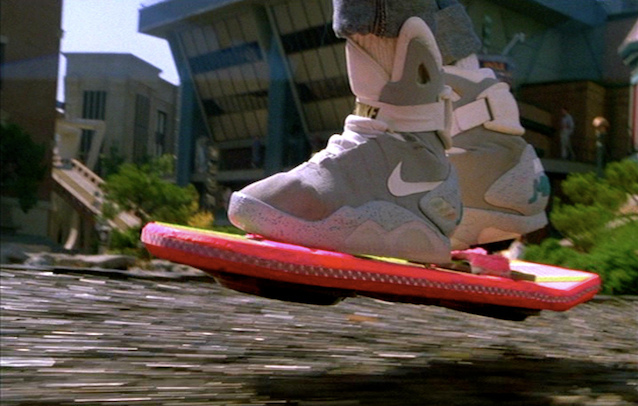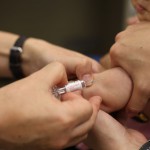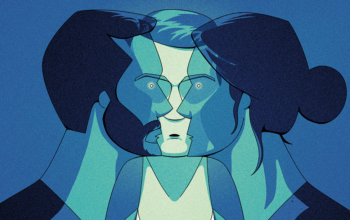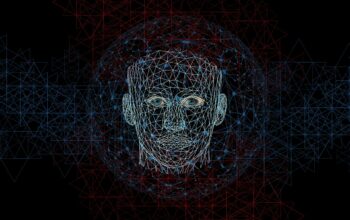The year is 2024. It’s 6:57A.M and you have just woken up. You feel well-rested, as your watch monitored changes in your breathing and heart rate to detect when you exited deep REM sleep, letting your alarm clock know the optimal time for it to ring. In anticipation of you waking up, and based on your showering habits, your water heater has prepared 100 liters of water at 46 degrees Celsius. While preparing breakfast, your fridge suggests that since you skipped 24% of your workout yesterday, it’d be better if you opted for the skim milk today.
As you leave the house the door locks automatically and the thermostat turns the heating off, to be reactivated when your phone’s GPS shows you are returning home. You enter your car and tell it to calculate the route to work. While completely autonomous cars are still a decade away, an array of sensors allows for an advance form of cruise control, with your car being aware of both its immediate surroundings and traffic conditions along its route in real time and can automatically stir, accelerate and decelerate to avoid collisions.
You are halfway to work, when suddenly you feel a lurch, as your car violently  accelerates and throws you in the town’s river. Both your phone and watch register the life-threatening deceleration and alert emergency services with a possible incident profile and GPS coordinates. Emergency services are on the scene in under four minutes and are able to pull you from the river and transfer you to the hospital.
accelerates and throws you in the town’s river. Both your phone and watch register the life-threatening deceleration and alert emergency services with a possible incident profile and GPS coordinates. Emergency services are on the scene in under four minutes and are able to pull you from the river and transfer you to the hospital.
As it turns out, your crash wasn’t an accident. You were randomly targeted by a virus that exploited a vulnerability in the connection between your MP3 player and your car’s stereo speakers to inject malicious code into your car’s navigation system. The police officers that visit you tell you the point of entry was most likely an illegally downloaded song, which makes you contributorily negligent and means your insurance will only cover part of your costs.
How likely is it that this is an accurate depiction of life ten years in the future?
All of the technologies described above already exist, even if not yet widely available. They involve the use of devices that come equipped with a variety of sensors to gather data, the processing power to make sense of the data, and the ability to connect with other “smart” devices to share and improve their capabilities. If current trends hold, we can expect such devices to reach critical adoption levels and become ubiquitous everyday objects
within the next decade. This would bring a variety of subtle and not-so-subtle changes to our daily lives. I try to highlight three of them below.
1. Your devices will start acting like your mother
Or at least like my mother… Smart sensors embedded in electronics gather a treasure trove of data about the user’s habits and uncover patterns in their activity that might not be immediately obvious. This allows for a macro outlook and much better management of one’s routine. A lot of the health trackers on the market today actually use positive and negative reinforcement mechanics similar to those found in video-games, nudging the users towards completing their preset goals. As more and more devices become equipped with such sensors, the picture presented would be increasingly complete. Using this information, everyone that wants to will be able to much better monitor and improve their health habits.
2. Efficiency saves lives, money (and maybe the planet)
Developed states are hard-pressed to continue providing high levels of services while dealing with low growth and aging populations, while developing states are facing challenges stemming from urbanisation and industrialisation, with a rising middle class that starts demanding those same services. In both cases the need to optimise the allocation of resources, both natural and budgetary, will be more important than ever.
Smart systems will be in a position to be a large part of this effort. Devices that micromanage their resource 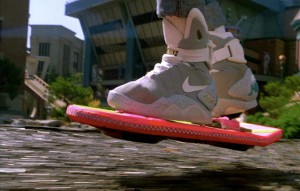 consumption and the parsing of publicly available data to more efficiently manage a variety of municipal services in
consumption and the parsing of publicly available data to more efficiently manage a variety of municipal services in
large cities are only two examples of the possibilities created by the proliferation of smart devices.
3. Virtual actions, real consequences
Whether the Internet will survive in its current global form remains an open question. But in one form or the other, networks of computers and devices are here to stay. As the increase in the use of networked devices drives our digital and real worlds closer together, risks taken online will have much greater impact offline. A just released Europol report warns that the first “online murder”, a murder committed remotely by exploiting security flaws in networked devices like pacemakers or cars, is going to happen within 2014, if it hasn’t already.
Beyond the physical risk, with so much of our lives cataloged by the various sensor-packed connected devices around us, privacy concerns and the need for data security will multiply a thousand-fold. This in combination with the economics of progressively lower prices for goods and services, will result in the norms of Internet activity starting to mirror those governing our everyday lives. Downloading a pirated movie or song will become equivalent to following a stranger into a dark alley to buy a bootleg CD, only the risk of bodily harm will be compounded by the possibility of exposing your entire life to them. The net effect of the need for more security will be that we will be increasingly held accountable for choices made online.
It is impossible to see a decade into the future with any sort of accuracy. To try is only to invite humiliation ten years down the line, if not much sooner. In the immortal words of Ken Olson, Chairman of Digital Equipment Corp. in 1977, “there is no reason anyone would want a computer in their home”. Despite that, there is value in undertaking this intellectual exercise, if for no other reason than to examine our present in a fresh light, and try to conceive of ways to engineer a future better than the one described above.
By Andreas Kechagias
Image credit:
Picture 1: Sam Howzit, licensed under CC BY 2.0
Picture 2: Nicholas Rumas, licensed under CC BY 2.0
